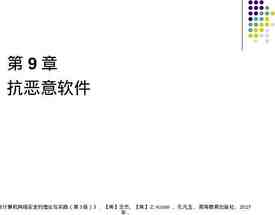Electric Charge and Static Electricity
23 Slides2.14 MB
Electric Charge and Static Electricity
Review of Heat Energy http:// studyjams.scholastic.com/studyjams/jams/ science/energy-light-sound/heat.htm
Types of Charge Everything is made up of atoms. Atoms contain 3 particles – protons, neutrons and electrons. Where are these particles located? What is their charge?
Proton and Electron Interaction If two electrons come together, they move away from each other – they repel. If two protons come together, they repel. If a proton and an electron come together, they attract one another.
Key Idea Charges that are the same repel each other. Charges that are different attract each other.
Repel or Attract?
Electric Fields Electric fields are regions around a charged object where the objects electric force is exerted on other charged objects. Electric fields get weaker the farther they are from the charge.
Electric Field Lines An electric field is invisible. You can use field lines to represent it. A field line shows the force that would be exerted on a positive charge at any point along that line. Positive charges are repelled by positive charges and attracted to negative charges, so field lines point away from positive charges and towards negative charges
Building Up Charge Most object have no overall charge – That means number of protons equals number of electrons. How does an uncharged object become charged?
Losing/Gaining Electrons It can only lose or gain electrons. It cannot change the number of protons! If it loses electrons what charge is it? If it gains electrons what charge is it? The buildup of charge on an object is called static electricity. In static electricity, charges build up on an object, but they do not flow continuously.
Charging Objects Charges are never created nor destroyed. This is known as the law of conservation of charge. There are four methods by which charges can redistribute themselves to build up static electricity: friction, conduction, induction, and polarization. What do you think these terms mean?
Friction and Conduction FRICTION CONDUCTION
Induction and Polarization Induction In some materials, like metals, electrons can leave their atoms. When metal object comes close to negative charge, the negative charges move away from it. The close end of the object becomes positive, the far end negative. Polarization Electrons can also move only within individual atoms. The electrons react to electric field, resulting in individual atoms having charged ends.
Static Discharge If an object becomes charged, it does not stay that way forever. The loss of static electricity as electric charges transfer from one object to another is called static discharge. Static discharge often produces a spark.
Examples Touching a doorknob Lightning
Study Jams Video http:// studyjams.scholastic.com/studyjams/jams/ science/energy-light-sound/electricity.htm




























